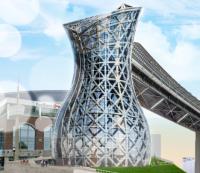The four alternatives have been identified as part of the Chesapeake Bay Crossing Study, which is seeking to address congestion on the existing Bay Bridge.
The work has indicated that each of the three corridor alternatives could have a positive impact on traffic.
“While the no-build alternative and three preliminary corridor alternatives are being included in the federal environmental process for further study, traffic models indicate that one of the three, building a third crossing within the same corridor as the existing Bay Bridge (Corridor 7), would have the most positive impact on reducing traffic,” said Maryland Transportation Authority (MDTA) executive director Jim Ports.
Corridor 7, the corridor where the existing Bay Bridge is today, provides the most congestion relief, the study has found. This corridor best relieves congestion at the existing bridge on both non-summer weekdays and summer weekends compared to all other corridors. Corridor 7 would best reduce backups at the existing Bay Bridge, provide the greatest reduction in the duration of unacceptable congestion levels and is more compatible with existing land-use patterns, according to the study data.

The MDTA and Federal Highway Administration (FHWA) are following a tiered process designed to provide a systematic approach. The purpose of the study is to consider potential alternatives to provide expanded traffic capacity and additional access across the Chesapeake Bay to improve mobility, travel reliability and safety at the existing Bay Bridge, while considering financial viability and environmental responsibility.





